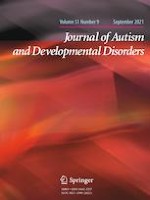18-11-2020 | Original Paper
The Effects of Aquatic Versus Kata Techniques Training on Static and Dynamic Balance in Children with Autism Spectrum Disorder
Gepubliceerd in: Journal of Autism and Developmental Disorders | Uitgave 9/2021
Log in om toegang te krijgenAbstract
The present study aimed to compare the effect of a land-based and a swimming-based exercise program on balance abilities in children with autism. Thirty children were voluntarily selected and randomly assigned to karate exercise, aquatic training and control groups. Participants practiced for 10 weeks, 2 sessions of 60 min per week. Before and after the 10-week intervention, static and dynamic balance tests were administered. The results showed that both interventions had a significant effect on balance abilities (p < 0.001); interestingly, we found the greater improvement in balance performance in kata techniques group. Due to the importance of balance performance on daily functions, communication and interaction skills, karate and swimming exercises can be the valuable interventions added to autism’s daily programs. Iranian Registry of Clinical Trials number: IRCT20180626040242N1
